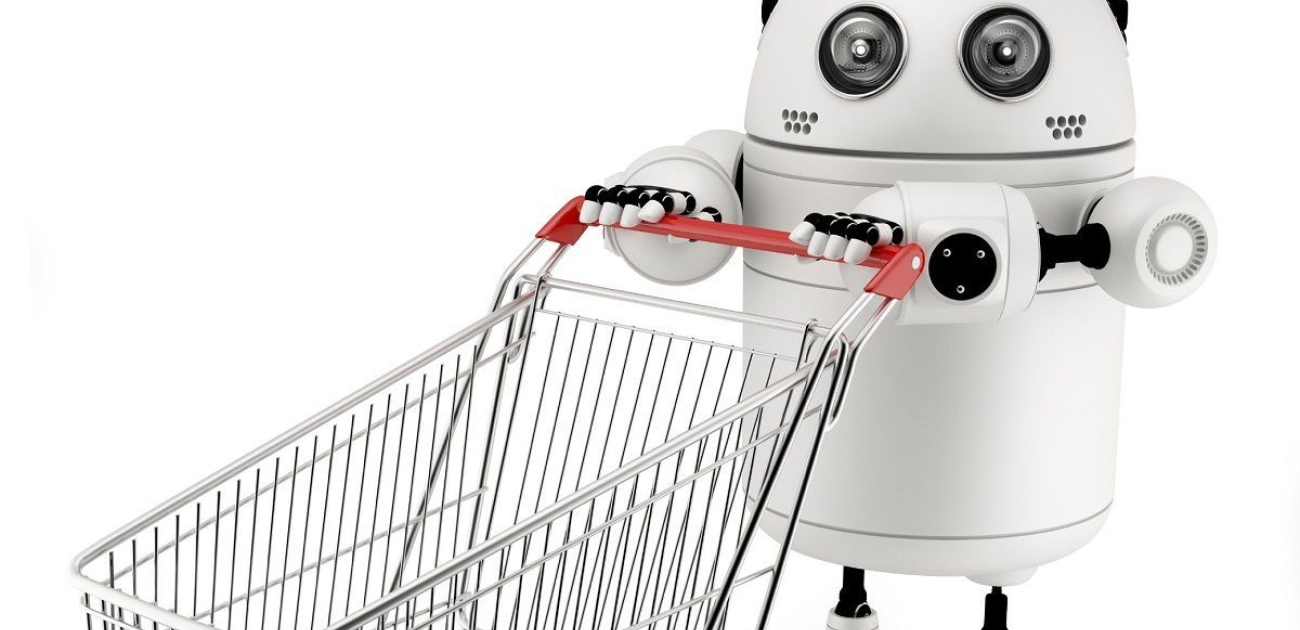Is Artificial Intelligence the Key to Retail Survival?
In light of the sea change in the current retail landscape, which was punctuated by the recent acquisition of Whole Foods by Amazon, retailers today are forced to ask themselves: How will we combat disruption in our industry by giants like Amazon and its few peers? To what extent should we migrate to mobile shopping (“m-commerce”), adopt cashier-less checkout, or even try to deliver purchases by drone?
Artificial intelligence is the prohibitive favorite among analysts to influence the future of retail, but current examples of retail adaptations to changing consumer preferences show that not all success will be driven by technology. According to a Gartner report and a TechEmergence article, some of the many adjustments that retailers are making to stay relevant in the world of online giants are high-tech, but some are not: (1) free delivery and returns; (2) data collection by in-store audio and video monitors; (3) improving in-store footprint/layout; (4) providing in-store assistance from people and robots to improve the experience and make checkout quicker/easier; and (5) using browser history and/or in-person shopping history to personalize the shopping experience and provide personalized promotions.
The consistent theme of these changes appears to be tailoring the shopping experience to each customer and expediting the painful parts of the process, namely, standing in lines and paying. Retailers that originated as exclusively e-commerce operations inherently better understand and implement artificial intelligence solutions. On the other hand, large retail establishments and boutique brick and mortar shops have had varying degrees of success in maintaining a devoted consumer base despite the stores’ best efforts to stay relevant.
Big box stores and club/membership stores are stereotypically slower to make changes because of their conservative boards and corporate hierarchies. The short-term bottom line matters most. Stock-price pressure will often force the hand of these stores to make only those changes that directly and irrefutably improve the bottom line. While artificial intelligence has gained traction in certain industries and certain companies, technology-based automation is often used in these stores only for certain pieces of the supply chain or manufacturing improvements, where the effect on the bottom line is perceived to be more easily calculated. With respect to UK grocery stores, for example, a recent Blue Yonder study found that “nearly 85 percent of UK directors said automation would help them to make faster decisions, yet in spite of this, half of grocery retail managers said that ‘gut feeling’ still plays a major part in their decision-making process.”
Boutique retailers often take a more personalized, but sometimes less high-tech, approach to improve customer conversion, retention and other KPIs. Their efforts may include: (1) targeted promotions based on proximity/mobile touchpoints; (2) back stories to products explained through multimedia productions; and/or (3) humanizing the shopping experience and making it more interactive (e.g., the DIY or “pick-your-own” movement; the sustainably-sourced local produce). Some small retailers also have a reliable niche customer base (such as tourists) who may be an exception to the general trend of online/mobile purchases. Even these niche retailers have an opportunity to expand their market through targeted advertising and facilitating purchases when customers leave the traditional reach of the niche shop.
Grocery stores, in particular, offer a unique opportunity for a brick and mortar stronghold due to the customer’s innate desire to see and select the fresh food he or she will consume. The PwC strategy+business blog explains that groceries began as a “pull” over-the-counter industry where the grocer would pull products from a stock room based on a customer’s order at the counter. The shift to a “push” industry began with the advent of supermarkets, now captained by worldwide retail grocery leader Wal-Mart. Push the products out on the shelves, the theory goes, and let the consumers select from the available choices. Then, more recently, the “digital pull” concept arose, through which mobile grocery orders can be submitted, the grocer will pull the desired products and either arrange for pick up or delivery. We will see how Amazon applies the digital pull method to Whole Foods, and if the AmazonFresh (grocery delivery) and/or Amazon Go (cashier-less brick and mortar) models becomes their standard.
Nevertheless, in the face of such competition from the push giant, Wal-Mart, and the pull giant, Amazon, smaller grocery stores still have unique advantages of strong customer loyalty and responsive price changes and promotions to be able to “ply-your-wares,” as PwC suggests. The digital ply method may very well prove to keep boutique grocers alive:
A digital ply model gives consumers something they can’t get from a scale-based model: tailored offers based on historical in-store shopping patterns and micro-segmentation derived from big data. The family being targeted by a digital message is not just segmented, but analyzed for its needs and wants, almost down to an individual level. The supermarket no longer tries to compete with Amazon or Walmart by providing everything; instead, it provides what it perceives its customers will want and need most. Sometimes this will be fresh or precooked food; other times, just the right assortment of staple goods. Sometimes, the supermarket offers rare items that a few key customers have bought in the past, and that happen to be available now.
In practice, retailers may also find that a combination of the methods described above works best. Roche Bros., for example, is a Massachusetts supermarket chain that remains confident that it can weather competition from the likes of Whole Foods. It has grown its loyal customer base by implementing a combination of high-tech and traditional strategies. Roche Bros. has run its own e-commerce platform for over a decade, which has been updated and modernized by a top e-commerce software firm, and most locations offer certain delivery and pick-up services. Also, by emphasizing fresh produce, meats, seafood and prepared foods, Roche Bros. has tried to avoid relying on non-perishables that are increasingly purchased through online retailers. It is also expanding new concepts with smaller stores that even better address the needs of local repeat customers. This mixture of technological advancements and strategic product offerings has kept Roche Bros. on strong ground.
As is true in any retail environment, a wholly-successful relationship between a seller and its buyers occurs when the seller has exactly what each buyer wants to buy, and no excess inventory. Like small grocery stores, most traditional small retailers will need to adopt tech-driven solutions to achieve such a delicate balance. But they are best positioned to adapt to local demands and may be able to use a combination of low-tech and artificial intelligence strategies to sustain a loyal customer base, even in the face of giants.
Do you want more information?
 Kyle S. Crossley
Kyle S. CrossleyIn-house counsel to leading national medical and recreational cannabis business.
